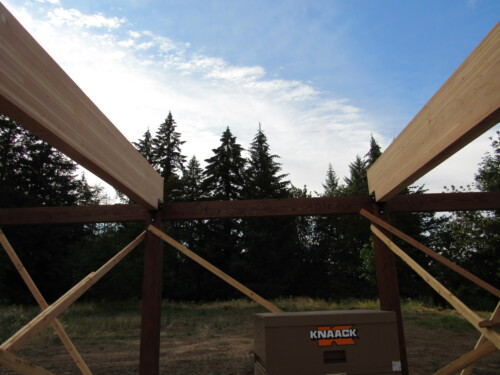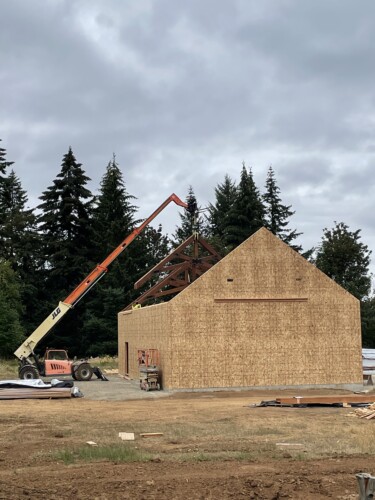 The Sleep and Dream Database (SDDb) is a digital archive designed to promote an empirical, hands-on approach to dream research. The SDDb enables users to apply basic tools of data analysis to identify meaningful dimensions of dreaming experience. The goal of the SDDb is not to replace other modes of dream interpretation, but rather to complement and enrich them with new insights into the recurrent patterns of dream content. Anyone who studies dreams, from whatever perspective and for whatever purpose, can benefit from knowing more about these basic patterns.
The Sleep and Dream Database (SDDb) is a digital archive designed to promote an empirical, hands-on approach to dream research. The SDDb enables users to apply basic tools of data analysis to identify meaningful dimensions of dreaming experience. The goal of the SDDb is not to replace other modes of dream interpretation, but rather to complement and enrich them with new insights into the recurrent patterns of dream content. Anyone who studies dreams, from whatever perspective and for whatever purpose, can benefit from knowing more about these basic patterns.
The SDDb is not the only online resource for this kind of approach to the study of dreams. The Dreambank.net website run by G. William Domhoff and Adam Schneider also has a large online collection of dream reports gathered by various researchers that can be searched and analyzed in many ways. The future will likely witness the development of many other online databases with valuable collections of dream material. The focus here is on the SDDb, but the following discussion highlights important methodological principles that apply to all forms of digitally enhanced dream research.
The SDDb currently contains more than 30,000 dream reports of various types from a wide range of people. Some of the reports come from individuals who have kept a dream journal for many years. Some of the reports come from participants in surveys and questionnaires. Some come from the studies of other researchers who have generously shared their data with me. The SDDb also includes dream reports from anthropological studies, historical texts, literary sources, and media interviews. (The database does not, however, contain dream reports that users have entered directly through an online portal. That feature awaits future development.)
The SDDb also includes, in addition to dream reports, the answers given by survey participants to a variety of questions about their sleep and dreaming, for example how often they remember their dreams, how often they experience insomnia, have they ever had a dream of flying or lucid dreaming, etc. The data also include people’s responses to various demographic questions about their gender, age, race/ethnicity, education, religious practices, political beliefs, etc.
This combination of a large number of narrative dream reports plus a large amount of quantitative survey data makes the SDDb an especially deep and varied resource for the study of dreaming.
The SDDb offers two basic functions for exploring this material. One, “Survey Analysis,” enables you to compare answers to questions posed on a survey or questionnaire. For example, you can create a statistical table to compare the dream recall frequencies of people from different age groups, or the insomnia frequencies of people with different political views, or the occurrence of lucid dreams among men and women.
The other function, “Word Searching,” enables you to sift through large numbers of dreams for particular words and phrases. You can search the dreams by choosing your own word strings, or you can also use the built-in word search templates to search for typical categories of dream content. This function allows you, for example, to search a set of dreams for all the references to water, or colors, or fear, or the names of famous people or places.
Background and Methodology
The development of the SDDb began in the early 2000’s in consultation with G. William Domhoff and Adam Schneider, who helped me understand how to use their Dreambank.net website. With their encouragement I started designing a new, complementary database that would 1) include both dream reports and survey data, 2) allow for the use of built-in word search templates, and 3) have the flexibility to enable a wide range of searches and analyses. In 2009 I worked with Kurt Bollacker, a software designer and engineer from San Francisco with expertise in digital archiving practices, to build the first version of the database. In 2014 I began working with Graybox, a web technology company in Portland, to expand the scope of the SDDb and improve its user interface. A major upgrade of the database was completed by Graybox in the spring of 2020.
The word search approach has many advantages as a mode of dream research include its speed, transparency, replicability, flexibility, and power to analyze very large quantities of material. The process is fairly easy to learn, and sites like the SDDb and Dreambank.net provide free and open access for users to engage in their own study projects aided by these new digital tools.
This approach has several disadvantages, too. They include deemphasizing the qualitative aspects of dreaming, overemphasizing the measurability of dream content, and leaving open the key question of how to connect the numerical frequencies of word usage with the waking life concerns of the dreamer.
These disadvantages can be diminished by using quantitative analysis as one method among others in a multidisciplinary approach to dreams. There is no reason in principle why word search methods cannot work in coordination with other methods using qualitative insights and evaluations. Indeed, I would argue the future prosperity of dream research depends on developing better interdisciplinary models for integrating the results of multiple methods of study. The users of the SDDb can help to make progress in creating those models.
To address the challenge of how to connect the word usage frequencies with relevant aspects of the dreamer’s life, two principles should be kept in mind. These principles suggest paths for exploring the potentially meaningful connections between the dream and the individual’s waking situation.
One principle is the continuity hypothesis: the relative frequency with which something appears in a person’s dream can be a reflection of its importance as a meaningful concern in the person’s waking life. In other words, the more often something (a character, setting, activity) shows up in dreams, the more emotionally important it’s likely to be in waking life. To be clear, the continuity does not need to be literal or physical; it’s more what people care and think about in their waking lives.
As an example, one of the dream series in the SDDb comes from “Bea,” a young woman whose anxious, sad dreams were continuous not with her actual life, which was quite safe at the time, but with her worries about possible bad things that might happen to her family or to the students in her care as dormitory resident assistant.
The other principle is the discontinuity hypothesis: infrequent and anomalous elements of dream content can be spontaneous expressions of playful imagination, occurring at any point in life but especially in times of crisis, change, or transition. Something that appears very rarely and is dramatically discontinuous with typical patterns of dream content can reflect the mind’s concerted effort to go beyond what is to imagine what might be.
As an example, the “Nan” series in the SDDb comes from a woman who had suffered a horrible car crash, followed by several months in the hospital. Most of the dreams in her series have negative, nightmarish quality (as would be expected from the continuity hypothesis), but one dream is unusual in having multiple colors, a good fortune, and a reference to beauty. Nan singled this dream out as having an especially important impact on her during her recovery from the accident, giving her a sense of hope that one day she would regain her health and creative spirits (which she eventually did).
A New Feature: The SDDb Baselines
The recent upgrade of the SDDb included the addition of a new feature that allows users to compare the results of word searches with a large set of more-or-less “average” dreams. This feature helps to determine the significance of the word search results. For example, I said above that most of Nan’s dreams have a “negative, nightmarish” quality. How can I support that claim? By using the baselines feature.
The baselines are two curated sets of “most recent dreams” from 2,094 males and 3,227 females, gathered by several researchers from a variety of populations between the 1950’s and the present (including the Hall and Van de Castle “norm” dreams). They are aggregated here to represent typical densities of the appearance of key words or phrases in ordinary dreaming.
In Nan’s case, her dreams indicate she definitely did feel strong concerns at this time, in a mostly negative direction. Of her 26 dreams, 8 of them (31%) have at least one reference to fear. The corresponding figure for the female baselines is 25%. She has references to death in 19% of her dreams, versus 9% for the female baselines; references to physical aggression in 23%, versus 15% for the female baselines; and zero references to happiness, versus 8% in the baselines.
These frequencies accurately reflect the frightened and vulnerable quality of Nan’s feelings in waking life. Even if we knew nothing about Nan’s personal life, we could use these variations of her dreams from the baselines to make the prediction that she is suffering through a difficult and frightening situation.
This is the foundation for the “blind analysis” method I have been using in several papers and IASD conference presentations (see below). Now the tools I use to make those analyses are available to everyone.
Further reading:
- The Meaningful Continuities Between Dreaming and Waking: Results of a Blind Analysis of a Woman’s Thirty-Year Dream Journal. Dreaming 28: 337-350.
- Using the LIWC Program to Study Dreams. Dreaming 28: 43-58. (Co-authored with Mark Graves)
- The Digital Revolution in Dream Research. In Dream Research: Contributions to Clinical Practice (edited by Milton Kramer and Myron Glucksman) (Routledge).
- Dreaming in Adolescence: A “Blind” Word Search of a Teenage Girl’s Dream Series. Dreaming 22: 240-252.
![]() At long last, after many twists and turns, a new and improved version of the Sleep and Dream Database (SDDb) has been released, just in time for spring! Many thanks to the Elsewhere.to team–Gez Quinn, Kat Juncker, Dan Kennedy, and Victoria Philibert–for their help in the upgrade process. The SDDb is a growing archive of dream reports and survey data, with analytic tools designed to be used by anyone, from curious newcomers to advanced researchers. The SDDb offers two basic methods of studying dreams. One is to analyze the database’s collection of 18 demographic surveys to discover patterns of sleep and dreaming in relation to variables like age, ethnicity, sex assigned at birth, and religious beliefs. The second is to search the database’s collection of more than 45,000 dream reports gathered from many sources and available to study using built-in tools for identifying, analyzing, and comparing the frequencies of different categories of content.
At long last, after many twists and turns, a new and improved version of the Sleep and Dream Database (SDDb) has been released, just in time for spring! Many thanks to the Elsewhere.to team–Gez Quinn, Kat Juncker, Dan Kennedy, and Victoria Philibert–for their help in the upgrade process. The SDDb is a growing archive of dream reports and survey data, with analytic tools designed to be used by anyone, from curious newcomers to advanced researchers. The SDDb offers two basic methods of studying dreams. One is to analyze the database’s collection of 18 demographic surveys to discover patterns of sleep and dreaming in relation to variables like age, ethnicity, sex assigned at birth, and religious beliefs. The second is to search the database’s collection of more than 45,000 dream reports gathered from many sources and available to study using built-in tools for identifying, analyzing, and comparing the frequencies of different categories of content.

 Construction is going well so far on the Dream Library, a stand-alone structure on a rural, forested property near Portland, Oregon. As many friends and colleagues know, the project has taken a long time to reach this stage, but at last it’s beginning to take actual shape. The building will provide a long-term archive for dream-related materials such as journals, books, and art. The journal & book collections of Jeremy Taylor and Patricia Garfield will form the core of the library, along with other donated materials and my own collections.
Construction is going well so far on the Dream Library, a stand-alone structure on a rural, forested property near Portland, Oregon. As many friends and colleagues know, the project has taken a long time to reach this stage, but at last it’s beginning to take actual shape. The building will provide a long-term archive for dream-related materials such as journals, books, and art. The journal & book collections of Jeremy Taylor and Patricia Garfield will form the core of the library, along with other donated materials and my own collections.



 It’s more than a metaphor to say that Halloween is a time when our nightmares go on parade. The scary images, decorations, and costumes that take over the month of October have a direct psychological connection to the actual themes and patterns of people’s nightmares. If we look at current research on nightmares—who has them, what they’re about, what causes them—we can gain new insight into the unconscious creativity of our Halloween festivities.
It’s more than a metaphor to say that Halloween is a time when our nightmares go on parade. The scary images, decorations, and costumes that take over the month of October have a direct psychological connection to the actual themes and patterns of people’s nightmares. If we look at current research on nightmares—who has them, what they’re about, what causes them—we can gain new insight into the unconscious creativity of our Halloween festivities. Hitting, fighting, chasing, shooting, killing—these are not only common themes in the news each day, they are also recurrent features of our dreams at night. Few studies have focused specifically on aggression in dreaming, even though Sigmund Freud, the founder of psychoanalysis, claimed that “the inclination to aggression is an original, self-subsisting instinctual disposition in man” (Civilization and its Discontents, 1930). A combination of old and new methods of research can shed light on how this primal instinct plays out in our dreams.
Hitting, fighting, chasing, shooting, killing—these are not only common themes in the news each day, they are also recurrent features of our dreams at night. Few studies have focused specifically on aggression in dreaming, even though Sigmund Freud, the founder of psychoanalysis, claimed that “the inclination to aggression is an original, self-subsisting instinctual disposition in man” (Civilization and its Discontents, 1930). A combination of old and new methods of research can shed light on how this primal instinct plays out in our dreams.
 Dream researchers are creatively deploying a variety of big data technologies to open a new era of oneiric discovery.
Dream researchers are creatively deploying a variety of big data technologies to open a new era of oneiric discovery.